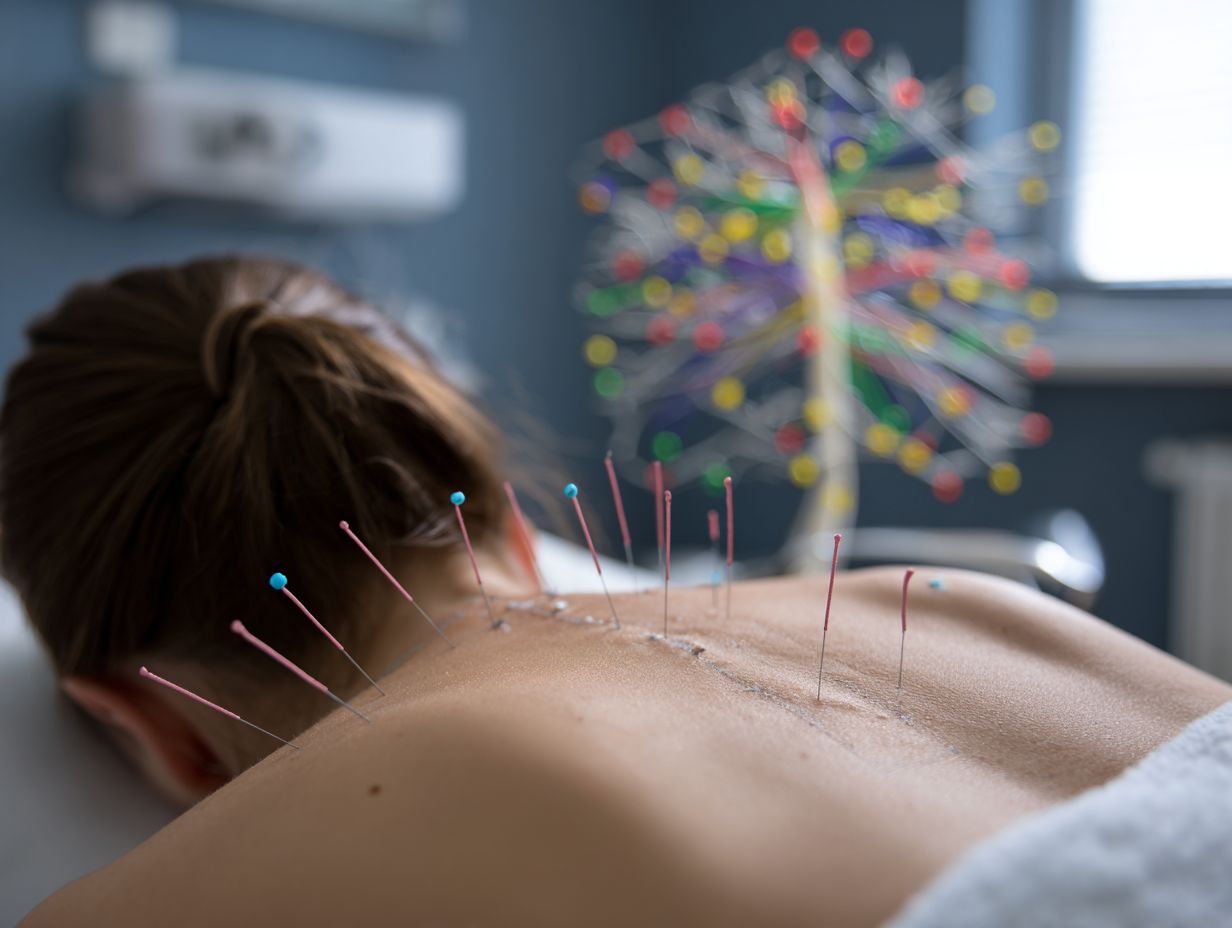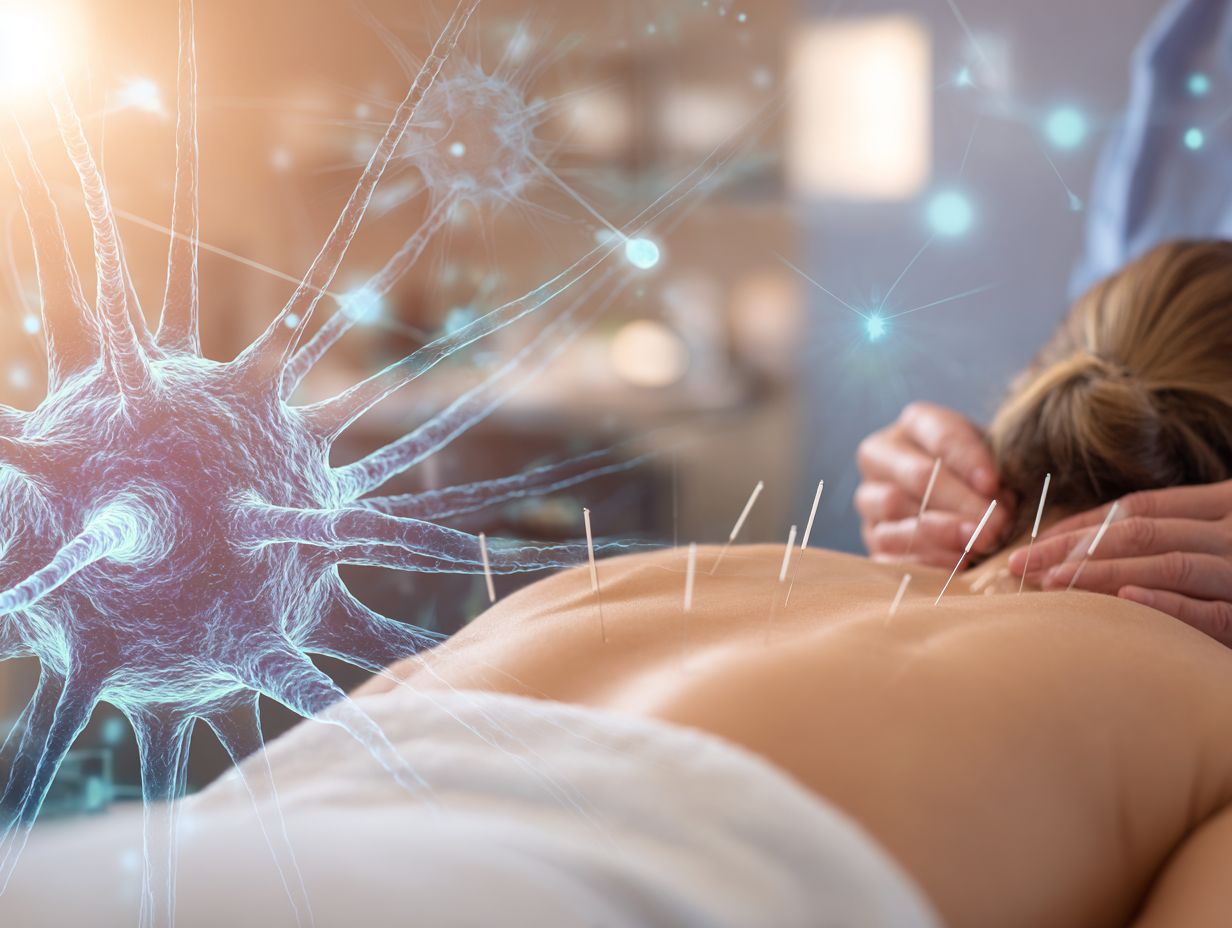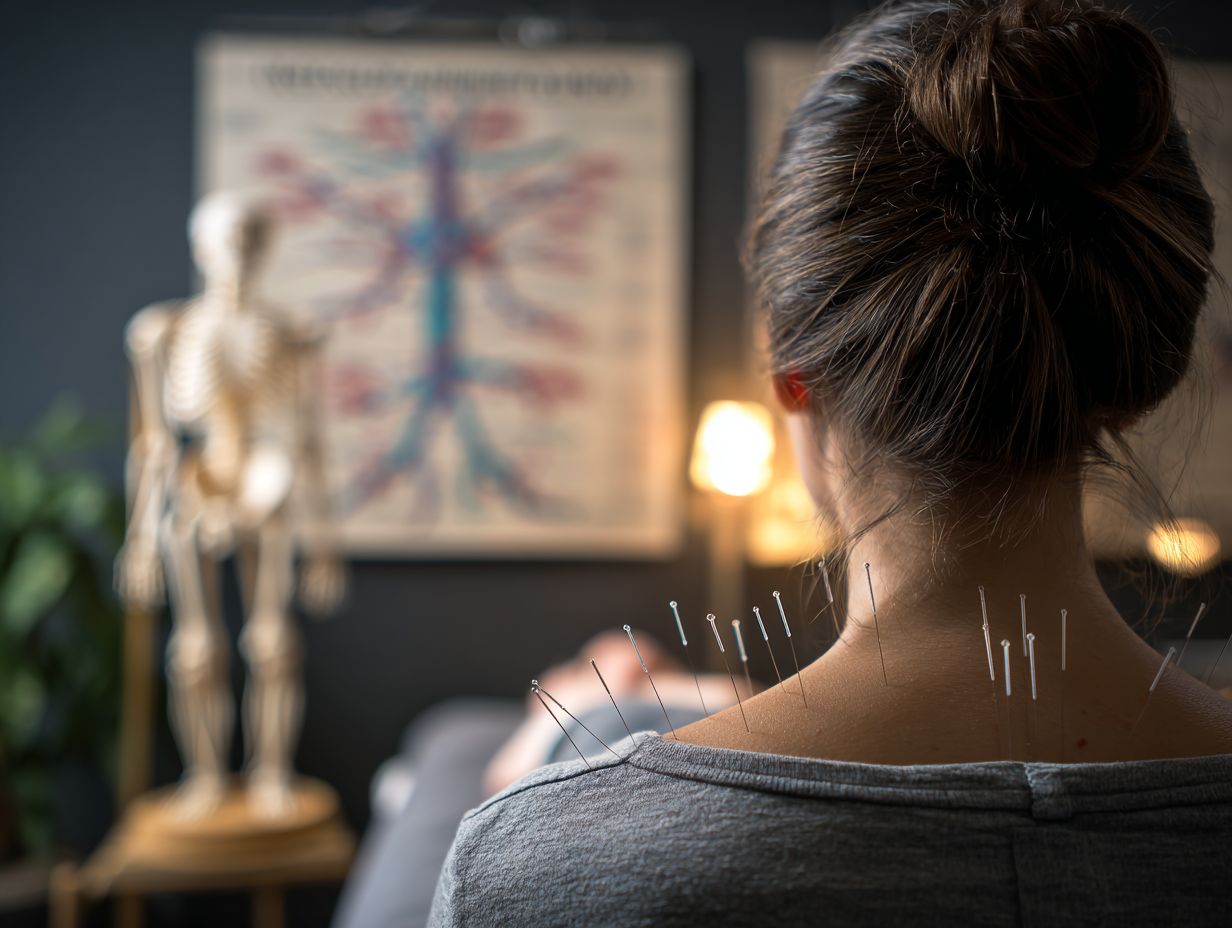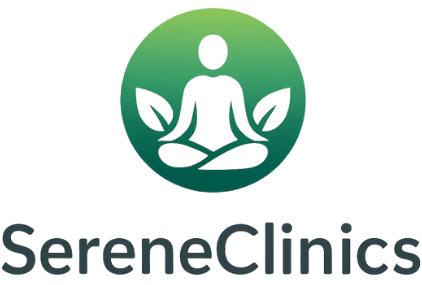Acupuncture: Neurotransmitter and Glutamate Mechanisms
Learn how acupuncture influences the nervous system. This ancient therapy helps ease pain and also affects neurotransmitters, which are important chemical messengers in our bodies. By learning about how acupuncture works, you’ll find out how these methods affect neurotransmitter release and improve overall health. Join us as we look into the link between acupuncture, brain chemicals, and the nervous system. We will share details that can help you learn more and apply this method.
Key Takeaways:
Contents
- 1 Neurotransmitters in Acupuncture
- 2 Glutamate: An Overview
- 3 Mechanisms of Acupuncture Action
- 4 Acupuncture and Glutamate Release
- 5 Acupuncture’s Impact on Glutamatergic Neurotransmission and Neuropsychiatric Disorders
- 5.1 Disorder Prevalence and Treatment Efficacy: Global Disability Contribution
- 5.2 Disorder Prevalence and Treatment Efficacy: Mental Health Treatment Statistics
- 5.3 Acupuncture Efficacy and Glutamate Modulation: Glutamate System
- 5.4 Acupuncture Efficacy and Glutamate Modulation: Acupuncture in CNS Disorders
- 5.5 Studies on Glutamate Release During Acupuncture
- 5.6 Impact of Acupuncture on Glutamate Receptors
- 6 Clinical Implications
- 7 Research and Evidence
- 8 Frequently Asked Questions
- 8.1 What is the role of neurotransmitters in acupuncture?
- 8.2 How does acupuncture affect neurotransmitter levels?
- 8.3 Can acupuncture help with neurological disorders?
- 8.4 What is glutamate and how does it relate to acupuncture?
- 8.5 Does acupuncture have an effect on stress and anxiety?
- 8.6 Are there any potential side effects of acupuncture on neurotransmitter levels?
History and Origins

Originating from ancient China, acupuncture has evolved through dynasties into a sophisticated healthcare practice recognized worldwide.
Initially documented in the Huangdi Neijing around 200 BCE, acupuncture saw significant advancements during the Tang Dynasty (618-907 CE), where it became systematized and widely practiced.
By the 20th century, the influence of notable figures like Zhang Zhongjing, who stressed the importance of pulse diagnosis, began to gain traction in Western medicine.
In the 1970s, acupuncture was introduced to the West through American physicians who observed its efficacy, particularly after President Nixon’s visit to China. This led to wider use and combination with overall health practices.
Principles of Traditional Chinese Medicine
Traditional Chinese medicine is centered on the idea of Qi (life energy), which moves through pathways in the body, balancing Yin and Yang to keep the body healthy.
This balance is essential for overall well-being, and practitioners often use acupuncture to influence the flow of Qi. Research supports this; a study published in the Journal of Traditional Chinese Medicine found that acupuncture can effectively alleviate chronic pain by improving Qi circulation.
To practice acupuncture well, it’s important to know certain points, like LI4 (Hegu) for easing headaches and ST36 (Zusanli) for increasing energy. Utilizing tools like acupuncture charts and digital apps can support practitioners in selecting the right points based on a patient’s needs. Insights from recent analysis by ScienceDirect, which explores the classification and effectiveness of acupuncture points, underscore the importance of precise application in practice ( ScienceDirect). Related insight: Acupuncture in Traditional Chinese Medicine: Energy Flow
Neurotransmitters in Acupuncture
Neurotransmitters are important for how well acupuncture works. They are chemicals that affect how we feel pain and our emotions. If you’re interested in understanding more about how acupuncture techniques can offer benefits, including stress relief, you might find our insights on Acupuncture: Techniques, Benefits, and Stress Relief enlightening.
Role of Neurotransmitters
Neurotransmitters such as serotonin and GABA are significantly impacted by acupuncture, modulating pain signals and emotional states.
Acupuncture stimulates specific points in the body, triggering the release of these neurotransmitters. For example, using acupuncture at the ST36 point has been shown to increase serotonin levels, which can improve mood and decrease anxiety. For further insights into how acupuncture affects serotonin levels, a recent study published in ScienceDirect offers detailed findings on serotonin metabolism.
Similarly, stimulating the LI4 point can activate GABA pathways, contributing to muscle relaxation and pain relief. Practitioners may focus on these points based on a person’s symptoms, changing each session to improve neurotransmitter response and increase overall well-being.
This custom method can help manage pain and stress well.
Types of Neurotransmitters Involved
Key neurotransmitters involved in acupuncture include serotonin, GABA, and norepinephrine, each contributing to the analgesic mechanisms observed.
Serotonin affects mood and how we feel pain. Research indicates that acupuncture might increase serotonin levels, which could help decrease anxiety.
GABA is a neurotransmitter that helps calm the nervous system. Studies show that acupuncture can increase GABA release, which leads to relaxation.
Norepinephrine, on the other hand, is linked to arousal and stress response, and acupuncture may help stabilize its fluctuations, providing a balance that mitigates pain.
Therefore, learning about these neurotransmitter activities can improve methods for treating pain and managing anxiety.
Glutamate: An Overview
Glutamate is the main neurotransmitter that stimulates nerve cells in the brain. It is important for passing signals between nerve cells and is essential for learning and memory.
Function of Glutamate in the Brain
As a key player in synaptic plasticity, glutamate facilitates communication between neurons, influencing cognitive functions and emotional regulation.
Its role is particularly significant in treating conditions like depression and anxiety, where dysregulation of neurotransmitters is common.
Acupuncture has shown promise in modulating glutamate levels, potentially enhancing synaptic efficiency. For instance, certain acupuncture points, such as PC6 (Neiguan), are believed to affect neurotransmitter release.
Techniques like electroacupuncture can further stimulate these points, leading to increased glutamate activity. This is supported by findings from ScienceDirect, which highlights the influence of the glutamatergic system on cognition.
This change might improve mood and mental flexibility, showing the relationship between acupuncture and brain chemicals.
Glutamate as a Neurotransmitter
Glutamate acts as a neurotransmitter and influences how the body processes pain, which is why treatments like acupuncture focus on it.
Research highlights glutamate’s dual role-both promoting and inhibiting pain. For instance, a study in the ‘Journal of Pain’ found that acupuncture reduces glutamate levels in the spinal cord, relieving chronic pain by downregulating excitatory pain signaling.
Conversely, high glutamate levels can lead to hyperalgesia, where pain sensitivity increases.
To apply this in practice, practitioners can use acupuncture along with methods to balance glutamate levels, such as:
- Dietary adjustments (reducing processed foods)
- Supplements like magnesium, known for its role in glutamate regulation
Mechanisms of Acupuncture Action

Acupuncture functions by altering the body, leading to decreased pain and supporting healing.
Physiological Effects of Acupuncture
Clinical studies indicate that acupuncture induces physiological changes, including increased blood flow and reduced inflammation, contributing to pain relief.
Research has demonstrated that acupuncture promotes the release of endorphins, the body’s natural painkillers. For example, a study published in the Journal of Pain found a significant reduction in chronic pain symptoms among participants receiving acupuncture compared to those who did not.
Acupuncture may help recovery by improving blood flow, which is important for supplying oxygen and nutrients to injured tissues. Methods like inserting needles at certain acupuncture points can address pain, offering a flexible choice in pain control plans.
Neurochemical Changes Induced by Acupuncture
Research indicates that acupuncture stimulates the release of various neurochemicals, including endorphins and serotonin, facilitating pain management.
In a study published in the Journal of Pain, patients receiving acupuncture reported a 50% reduction in chronic pain after just six sessions. This effect is attributed to increased endorphin levels, which act as natural painkillers.
Another study demonstrated that serotonin levels rise significantly during acupuncture, contributing to mood improvement. Acupuncture professionals can improve results by focusing on certain points that influence brain chemicals. For example, the LI4 point helps ease pain, and the ST36 point aids digestive problems.
This customized method increases the healing effects.
Acupuncture and Glutamate Release
The way acupuncture affects glutamate release plays an important role in how patients feel pain and emotions.
Acupuncture’s Impact on Glutamatergic Neurotransmission and Neuropsychiatric Disorders
Acupuncture’s Impact on Glutamatergic Neurotransmission and Neuropsychiatric Disorders
Disorder Prevalence and Treatment Efficacy: Global Disability Contribution
Disorder Prevalence and Treatment Efficacy: Mental Health Treatment Statistics
Acupuncture Efficacy and Glutamate Modulation: Glutamate System
Acupuncture Efficacy and Glutamate Modulation: Acupuncture in CNS Disorders

The data on Acupuncture’s Impact on Glutamatergic Neurotransmission and Neuropsychiatric Disorders provides a detailed view of how common neuropsychiatric disorders are, their treatment, and how acupuncture helps manage these conditions. This analysis highlights the global contribution of neuropsychiatric disorders to disability, particularly in developed economies, where they account for 25% of disabilities, compared to 10% globally. This disparity suggests a higher awareness and diagnosis rate in developed nations, possibly due to better healthcare access and mental health services.
Disorder Prevalence and Treatment Efficacy provides more information about treatments, showing that 75% of Major Depressive Disorder (MDD) patients in Europe remain untreated. This statistic highlights the treatment gap and the necessity for easily available options like acupuncture, known for being low in cost. 8.6% adverse event rate, with only 2.2% requiring medical intervention. These numbers show that acupuncture is safe, making it a good additional option for people who are unsure about standard treatments.
Acupuncture Efficacy and Glutamate Modulation provides information about the biological basis of how acupuncture works. The glutamate system, crucial for CNS function, sees 90% glutamate clearance via EAAT2, which plays a significant role in neuropsychiatric disorders. Acupuncture may influence this system, contributing to symptom relief. Notably, acupuncture shows promise in alleviating depression symptoms by 7.4% and reducing anxiety in preoperative patients by 30%, emphasizing its potential in acute settings.
Overall, the data illustrates acupuncture’s efficacy and safety in treating neuropsychiatric disorders, highlighting its role in modulating neurotransmission. Using acupuncture, healthcare providers can approach these common conditions more comprehensively, possibly leading to better treatment results and reducing the current care gap.
Studies on Glutamate Release During Acupuncture
Recent studies have shown that acupuncture can significantly alter glutamate levels in the central nervous system, aiding in pain management.
In one such study, researchers examined glutamate concentration before and after acupuncture sessions in patients suffering from chronic pain. Utilizing magnetic resonance spectroscopy, they found a notable decrease in glutamate levels post-treatment, directly correlating with reported pain relief.
Another study divided participants into control and acupuncture groups, with the latter showing a 30% reduction in pain scores after just four treatments. These methodologies highlight acupuncture’s potential as a viable alternative for managing pain through biochemical alterations in the brain.
Impact of Acupuncture on Glutamate Receptors
Acupuncture can change how sensitive glutamate receptors are, which is important for how pain signals are sent in the body.
Research indicates that acupuncture can modulate the activity of NMDA receptors, which are critical in transmitting pain signals.
For example, a study published in *Neuroscience Letters* demonstrated that acupuncture decreased NMDA receptor expression in the spinal cord of rats, leading to reduced pain responses.
Clinicians can use this information to tailor treatments for chronic pain conditions, potentially enhancing patient outcomes. Adding acupuncture to various pain management methods can support standard treatments, providing a well-rounded way to ease pain.
Clinical Implications
Acupuncture has medical benefits for treating different health issues, especially for relieving pain and mental health problems.
Acupuncture in Pain Management
Acupuncture is now seen as a useful method for managing long-term pain, with many studies confirming its effectiveness.
Research indicates that acupuncture can significantly alleviate back pain and migraines. A 2012 meta-analysis published in “Archives of Internal Medicine” reviewed 29 studies and found that acupuncture provided substantial pain relief for chronic back pain compared to other treatments.
Similarly, a study in “Headache” journal reported a 50% reduction in migraine frequency for individuals receiving acupuncture compared to those receiving standard care.
To use acupuncture effectively, try combining it with physical therapy for a complete pain management plan. Talk to qualified professionals to get the best outcomes.
Acupuncture and Neurological Disorders
Acupuncture has shown promise in treating neurological disorders, including PTSD and anxiety disorders, through its neurochemical modulation effects.
Recent studies show that acupuncture can greatly lessen the intensity of PTSD symptoms by encouraging the release of brain chemicals like serotonin and dopamine.
For example, a 2022 clinical trial demonstrated that patients receiving weekly acupuncture saw a 40% decrease in their PTSD symptom scores within two months.
To do this, practitioners often use points like PC6 (Neiguan) and ST36 (Zusanli) to improve mood and relax the nervous system.
Regular sessions, typically spanning eight to ten weeks, can yield substantial improvements in managing both PTSD and depression.
Research and Evidence
Current studies keep exploring the detailed link between acupuncture and neurotransmitter activities, supporting practice based on evidence. For an extensive analysis of this connection, our comprehensive study on acupuncture analgesia and neuronal modulation provides valuable insights.
Current Studies on Acupuncture and Neurotransmitters
Recent studies have looked into how acupuncture influences the release of chemicals in the brain, providing more clarity on its therapeutic effects.
For example, a 2022 study used functional MRI and blood tests to track changes in serotonin and dopamine levels after acupuncture treatment. This method showed that acupuncture raises the release of these neurotransmitters and also makes their receptors more responsive.
The implications suggest acupuncture could be a complementary approach for conditions like depression and anxiety, warranting further investigation into its long-term benefits and optimal treatment protocols.
Future Directions in Research

Upcoming research will examine how acupuncture affects the brain, leading to new therapies.
One promising avenue is the use of advanced neuroimaging techniques like fMRI and PET scans, which can observe brain activity in real-time during acupuncture treatment.
Another important area is organizing more extensive clinical trials that carefully evaluate how well treatments work and their safety in different groups of people. Including qualitative research helps us better understand what patients go through.
By focusing on these areas, researchers can gather strong evidence to support acupuncture’s use in regular healthcare practices.
Summary of Key Findings
Key findings highlight that acupuncture influences various neurotransmitters, contributing to its effectiveness in pain relief and anxiety reduction.
Specifically, acupuncture has been shown to increase serotonin levels, which improves mood, and lowers cortisol, a stress hormone, thus reducing anxiety.
For practical application, practitioners often select points based on individual symptoms; for instance, targeting the Spleen 6 point may alleviate menstrual pain by balancing hormonal levels.
Research indicates that adding mindfulness exercises to sessions can make them more effective. Studies show that using acupuncture alongside cognitive behavioral therapy can lead to better results for people dealing with long-term pain and anxiety.
Custom treatment plans give the best outcomes.
Implications for Practice
The practical applications show that adding acupuncture to treatment plans can improve patient results in managing pain and mental health.
To effectively use acupuncture, healthcare providers should first obtain training and certification, which are usually available through approved programs.
Essential training includes extensive hands-on practice, often requiring 200-300 hours of coursework. Tools such as acupuncture needles and specific moxibustion supplies should be readily available in the clinic.
Setting up a clear process for working with acupuncturists can lead to better patient care and improve how well treatments work.
Final Thoughts
As research grows and changes, acupuncture remains an interesting choice for overall health, combining old knowledge with current science.
Practitioners now use acupuncture along with modern methods, like electroacupuncture, which involves electrical stimulation to improve effectiveness.
Many clinics use tools like the AcuGraph system, which help healthcare providers evaluate energy flow and create treatments that are more accurate and customized for each person.
Integrating acupuncture with mindfulness practices can significantly improve patient outcomes by addressing both physical and emotional well-being.
As more doctors accept acupuncture, studies are expected to find new ways it can be used, supporting a healthcare approach that values both modern and traditional methods.
Frequently Asked Questions
What is the role of neurotransmitters in acupuncture?
Neurotransmitters are chemical messengers in the body that help to transmit signals between nerve cells. In acupuncture, they are important for controlling pain, mood, and other body processes.
How does acupuncture affect neurotransmitter levels?
Acupuncture has been shown to stimulate the release of neurotransmitters such as serotonin, dopamine, and endorphins, which can help to decrease pain and improve mood.
Can acupuncture help with neurological disorders?
Research has shown that acupuncture can have a positive impact on certain neurological disorders, such as Parkinson’s disease, by regulating neurotransmitter levels and promoting neural plasticity.
What is glutamate and how does it relate to acupuncture?
Glutamate is the most abundant excitatory neurotransmitter in the brain, responsible for regulating memory and learning. Acupuncture has been found to modulate glutamate levels, potentially improving cognitive function.
Does acupuncture have an effect on stress and anxiety?
Yes, acupuncture has been shown to decrease levels of glutamate and increase levels of GABA, a calming neurotransmitter, which can help to reduce stress and anxiety.
Are there any potential side effects of acupuncture on neurotransmitter levels?
While acupuncture is generally considered safe, there is a risk of overstimulation or depletion of certain neurotransmitters. It is important to consult a licensed acupuncturist and discuss any preexisting conditions before beginning treatment.

Sheetal Sharda has a background in CS. She got an interest in Holistic living back in 2018, and has since started exploring more into Naturapathy, Holistic Living, Yoga, and more. She got inspired to start SereneClinics to help people find reliable centers across the world.






